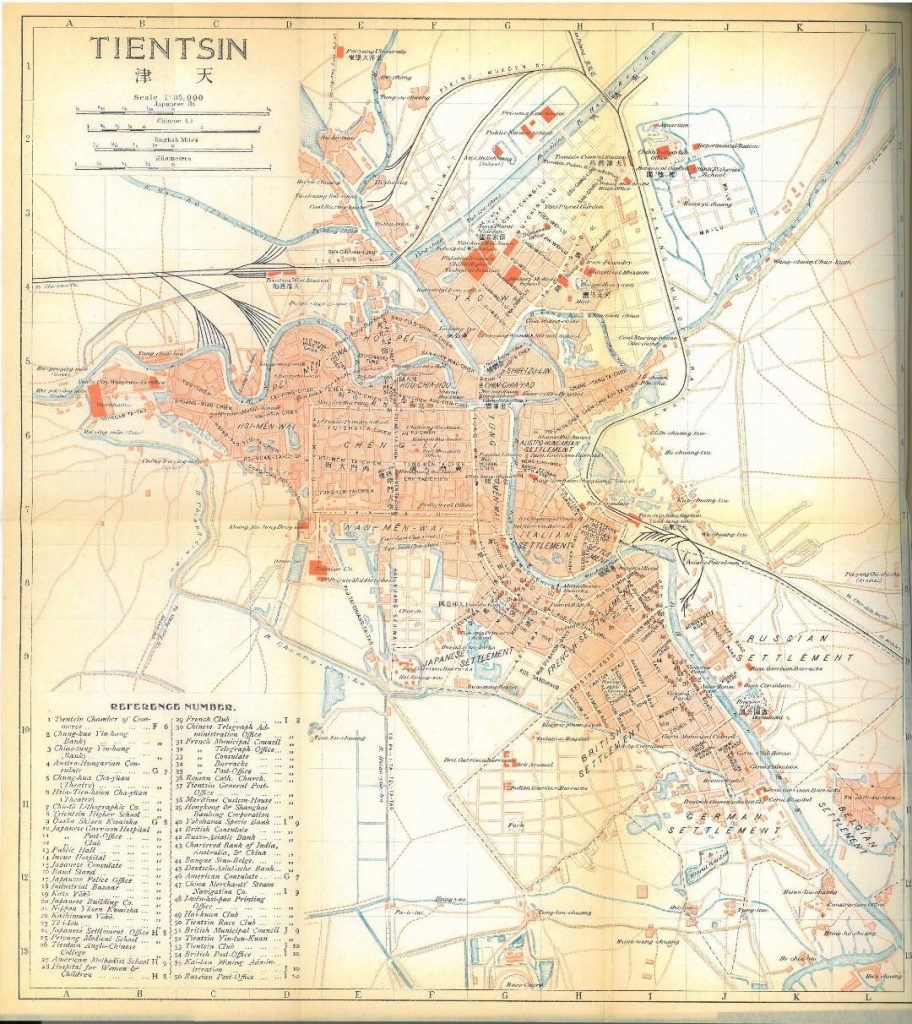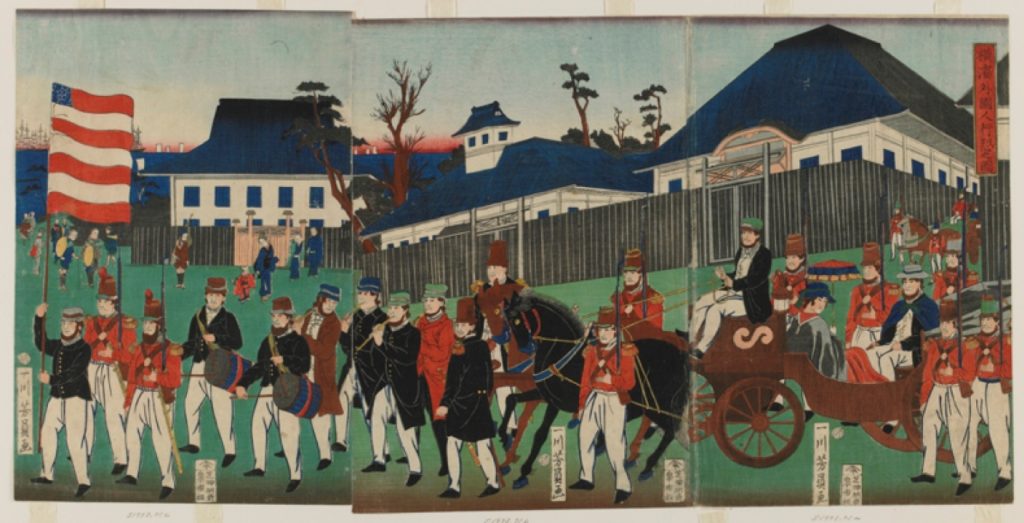Designing the East Asian Port Cities. Circulation of Building and Planning Models, 1840-1940
12 April 2021
9am – 13pm (CET) / 3pm – 7pm (CST)

Seminar Program
Chairing: Heleni Porfyriou (National Research Council of Italy, CNR-ISPC, italy)
- Georgina André (Université Paris 1 Panthéon-Sorbonne, France), Hankou in Wuhan municipality: From a commercial port to an urban experiment (1840-1937)
- Shigenao Onda (Hosei University - Japan), The urban transformation of Amoy (Xiamen), in the 1920s and 30s
- Richard Hu (University of Canberra - Australia), The Nationalist Planning of Greater Shanghai: 1927–1949
- Christine Mengin (Université Paris 1 Panthéon-Sorbonne - France), Thomas Renard (Université de Nantes - France), The Urban Challenges of a Three-Core City: Tianjin at the Turn of the 20th Century
- Carola Hein (Delft University of Technology - Netherlands), Dynamic Landscapes of East Asian port cities: Jardine Matheson— a trading company as a vehicle of cross-cultural urbanism and architecture
Discussant’s comments and open debate 11.30am-13.00pm
Abstracts
- Georgina André (Université Paris 1 Panthéon-Sorbonne, France), Hankou in Wuhan municipality: From a commercial port to an urban experiment (1840-1937)

Hankou, one of the three towns of Wuhan, the capital city of Hubei located at the confluence of the Han and Yangtze rivers, has developed from the xvth century onwards as one of the biggest Qing dynasty commercial port by the Han river, connecting the Northern provinces with the Southern provinces. Lacking any administrative status, Hankou development has followed for many centuries an organic pattern piloted by the needs of the various local merchants’ guilds, often threatened by natural hazards and fire disasters.
This situation has changed at the end of the xixth century: the foreign concessions and the needs for modernization have pushed for the development of Hankou along the Yangtze riverbank. The development of modern infrastructures e.g. roads, railway station, commercial, political and cultural buildings as well as residential areas (the so-called lifen) have benefited not only the foreign concessions areas, but have also been slowly exported outside of the concession area by the local Chinese elites. In spite of the historical turmoil at the turn of the xxth century, these experiments combined with the first attempts for modern urban planning during the Chinese Republic reveal the vibrancy of Hankou urban and commercial culture, that will indeed last until today.
- Shigenao Onda (Hosei University - Japan), The urban transformation of Amoy (Xiamen), in the 1920s and 30s

Amoy (Xiamen) had undergone city improvement from the 1920s to the 1930s. It was the Chinese themselves who planned to redesign the existing city that had been shaped through the Age of Discovery.
In this presentation, I will focus on street planning in city improvement, and clarify the process from planning to realization. It is important to note that these plans were only for the redesigning of existing cities, not for new land. In addition, the plan included updating the buildings along the planned streets. As a result, the cityscape of Amoy changed drastically before and after the implementation of the street plan, and this has shaped the cityscape of Amoy for a long time. This kind of city improvement was realized in other cities of various sizes in Fujian and Guangdong provinces. So, it has been taken up as a characteristic cityscape in the past.
However, this overview has yet to be clarified today. It may be due to the fact that the impact of such urban transformation has not been well examined in urban studies, and also that historical materials are scattered or difficult to find. In order to examine this subject, I will try to uncover the historical documents related to the plan at that time, and also conducted a survey of the existing buildings to clarify the historical facts in Amoy during that period. Although the period from the planning to the realization of the project was only a little more than ten years, it reveals the process of empirical experiment for redesigning the city, which was encountered unexpected errors.
- Richard Hu (University of Canberra - Australia), The Nationalist Planning of Greater Shanghai: 1927– 1949

Shanghai was a dual city—a Chinese Shanghai and a foreign Shanghai—for one century after 1843 when it was opened as a port city. In this presentation, I talk about the Chinese planning of Shanghai from 1927 to 1949, when the city was transitioning from a Chinese-foreign city to a fully Chinese city. This part of planning history is important for understanding the diffusion and genesis of modern planning not only in Shanghai but also in China. For long, its importance has not received attention and recognition to an extent it should, largely due to the political and ideological sensitivity to the post-1949 regime. I label it ‘nationalist’ planning for two reasons. One, this period was under the rule of the Nationalist Government of the Republic of China. Second, the planning had a prior nationalist goal of building a new Shanghai and further of building a new China. I analyse two benchmark plans for Greater Shanghai to reveal the contexts, attributes, and influences of them. The implementation of them were impacted by wars and regime changes. However, these plans represented the earliest nationalist endeavour of nation building through city making in modern China, and have left an enduring intellectual legacy of modern planning in the city and in the nation.
- Christine Mengin (Université Paris 1 Panthéon-Sorbonne, France), Thomas Renard (Université de Nantes - France), The Urban Challenges of a Three-Core City: Tianjin at the Turn of the 20th Century

This presentation on Tianjin’s urbanism will follow a three-part sequence. First, we will present the main lines of the history of the three urban cores of Tianjin: the Chinese city, the nine foreign concessions and the modern district of Yuan Shikai. Then, by looking at the urban morphology, the networks and the river port, we will highlight the urban challenges that this shared history brings. Finally, we will take the example of the Italian concession to see how, in a nationalist and international context, hybrid urban and architectural practices are emerging.
- Carola Hein (Delft University of Technology - Netherlands), Dynamic Landscapes of East Asian port cities: Jardine Matheson—a trading company as a vehicle of cross-cultural urbanism and architecture

Private businesses and the commodity flows, that they facilitated, have shaped architectural and urban space around the world, connecting global and local design concepts and building practices and inspiring new trends. The buildings erected by the Far Eastern trading company Jardine Matheson, established in Canton in 1832 by two Scottish traders exemplify this cross-cultural urbanism. Jardine Matheson set up headquarters in Hong Kong in 1842 and later built offices in numerous Chinese port cities, as well as in Japan. As the traders traveled, they created patterns of urbanization and design in newly emerging port city hubs. The Hong Kong headquarters stood proudly as shown in an image of Causeway Bay in 1846. The company similarly occupied a prominent spot on the newly constructed Yokohama waterfront, The Scotsmen taught European-inspired architectural design concepts to local builders who appropriated these concepts for their own uses, as the case of Iwakichi Kajima suggests.
Jardine Matheson also stimulated cultural exchanges, including in the field of architecture and planning education. When a group of high-level politicians and specialists traveled from Japan to Europe and North America in 1871–73 to study political systems, economics, cultures, technologies, and built environments, they engaged foreign specialists, including Henry Dyer (1848–1918). This Scottish engineer became director of the Imperial College of Engineering in Tokyo.
Due to this particular history, architecture is taught in engineering schools in Japan and not—as in France—in design-oriented institutions.The first architecture professor, Josiah Conder, came from England, bringing his training and ideas with him. This paper examines the architectural and urban impact of Jardine Matheson in Japan, as an example of many other histories of business ties facilitating the cross-cultural transmission of architectural and urban ideas.

